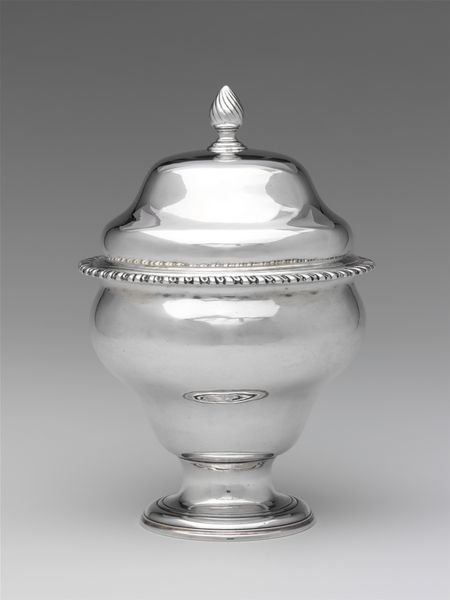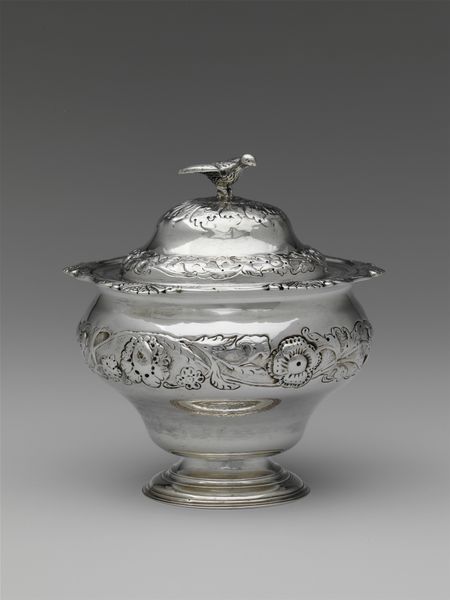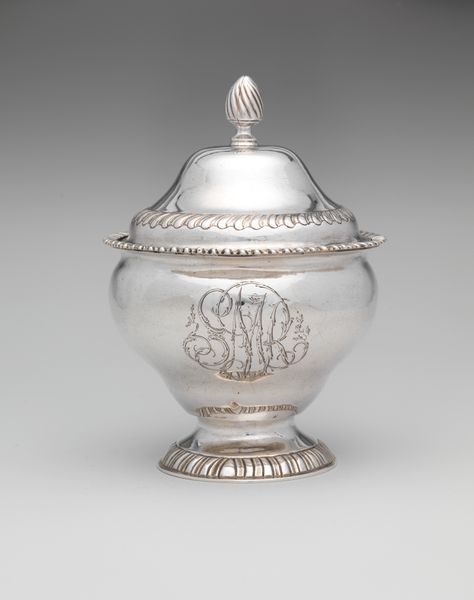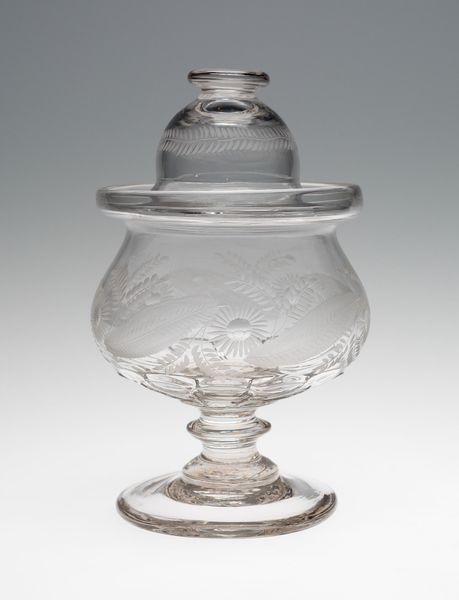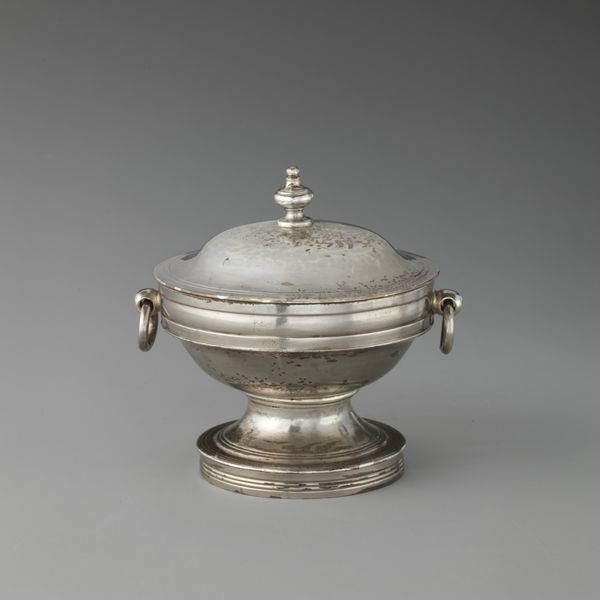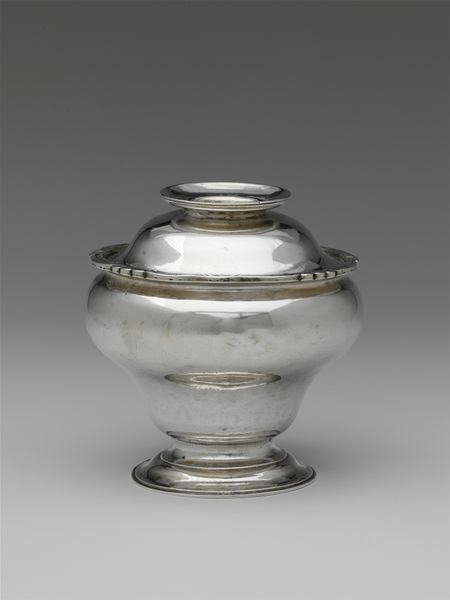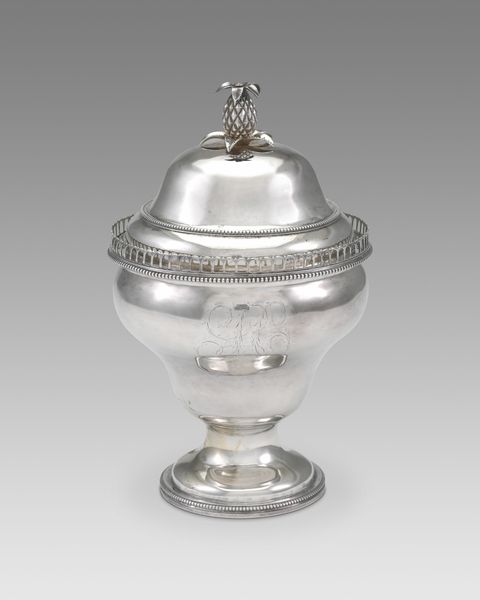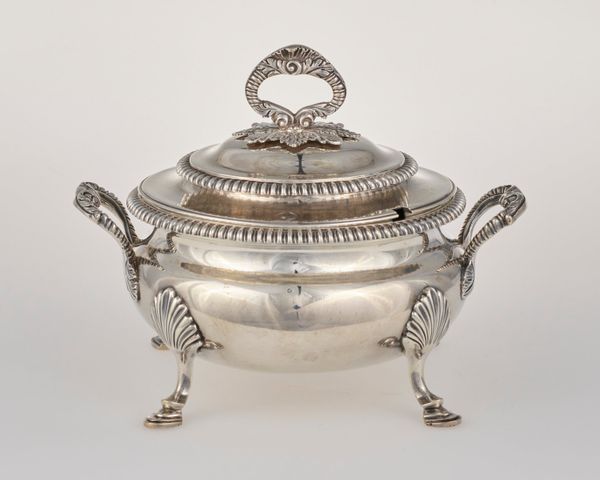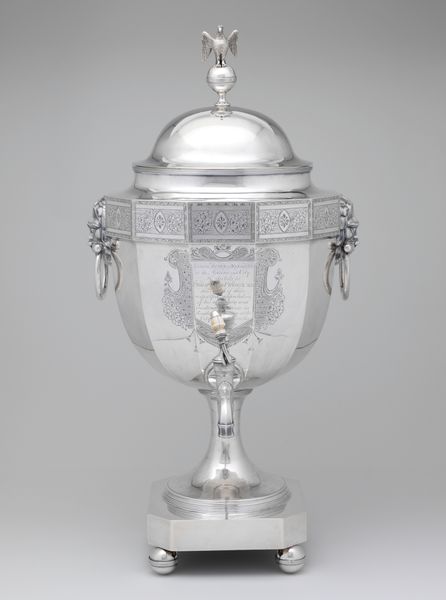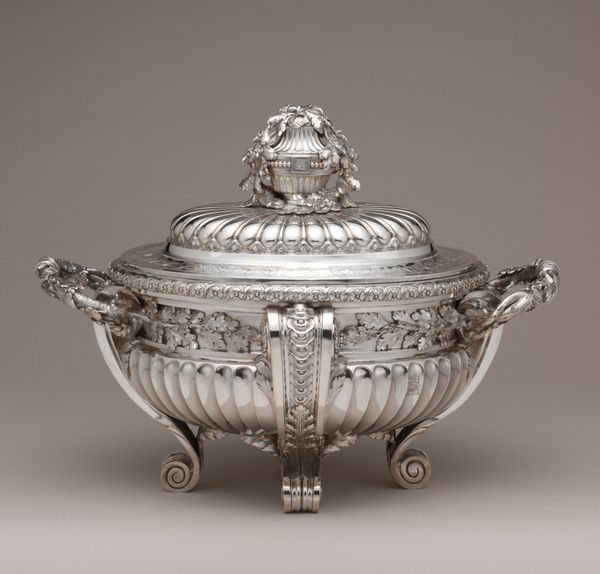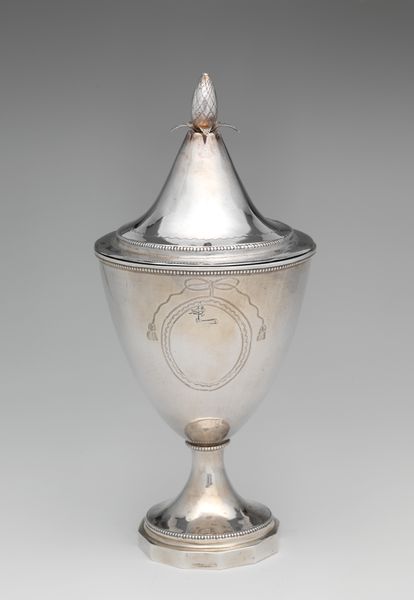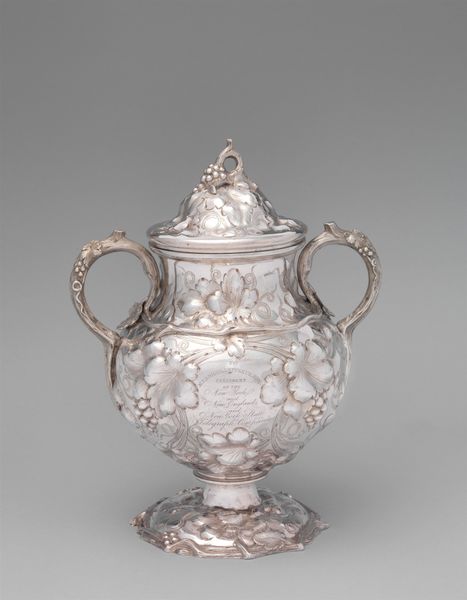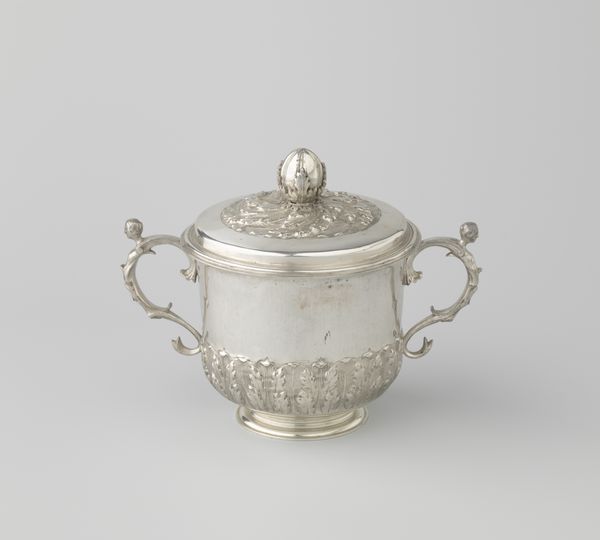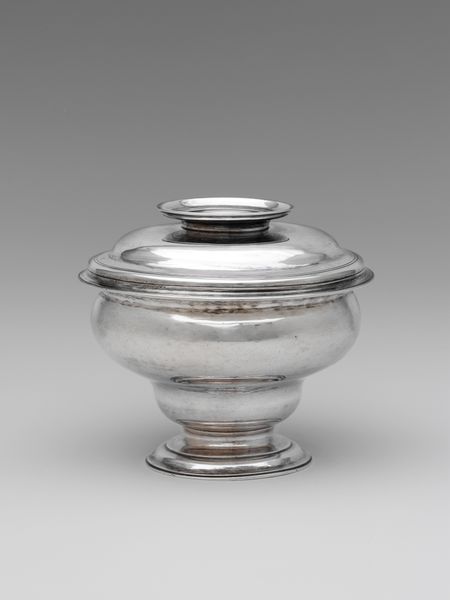
silver, metal
#
neoclacissism
#
silver
#
metal
#
decorative-art
Dimensions: Overall: 6 5/8 x 4 13/16 in. (16.8 x 12.2 cm); 16 oz. (497.1 g) Foot: Diam. 3 3/4 in. (9.5 cm) Body: H. 4 9/16 in. (11.6 cm); 10 oz. 16 dwt. (335.6 g) Cover: 2 1/2 x 4 3/8 in. (6.4 x 11.1 cm); 5 oz. 4 dwt. (161.5 g)
Copyright: Public Domain
Editor: We're looking at a silver Sugar Bowl, made around 1790-1800. It’s currently housed at the Metropolitan Museum of Art. There’s something about the stark simplicity of its form that's quite captivating. What does this object bring to mind for you? Curator: Immediately, I think about the rise of the middle class in the late 18th century and their increasing desire to emulate aristocratic tastes. Items like this sugar bowl weren't just functional; they were status symbols. Sugar itself, once a luxury, was becoming more accessible, fueled by the brutal realities of the slave trade. Does knowing that context shift how you perceive the bowl's "simplicity"? Editor: Absolutely, it's hard to ignore the dark history tied to sugar's accessibility. Does the Met present that context when displaying pieces like this? Curator: Ideally, museums today are striving to provide that more complete picture. It's not enough to simply admire the craftsmanship; we need to understand the bowl's role in a larger social and economic system, a system built on exploitation. Were such decorative objects meant for show? Did people put them on display to flex the luxury that they could afford? Editor: That makes so much sense! The craftsmanship and beauty of this piece are striking, but understanding the socio-political factors changes the way I engage with it. I didn't anticipate how loaded this could be. Curator: Exactly. Art, even something as seemingly innocuous as a sugar bowl, is never created in a vacuum. Exploring its history opens a window onto the complexities of the past. Now, how does thinking about this all effect how museums communicate the history around the pieces they put on display? Editor: Food for thought. Thanks!
Comments
No comments
Be the first to comment and join the conversation on the ultimate creative platform.
